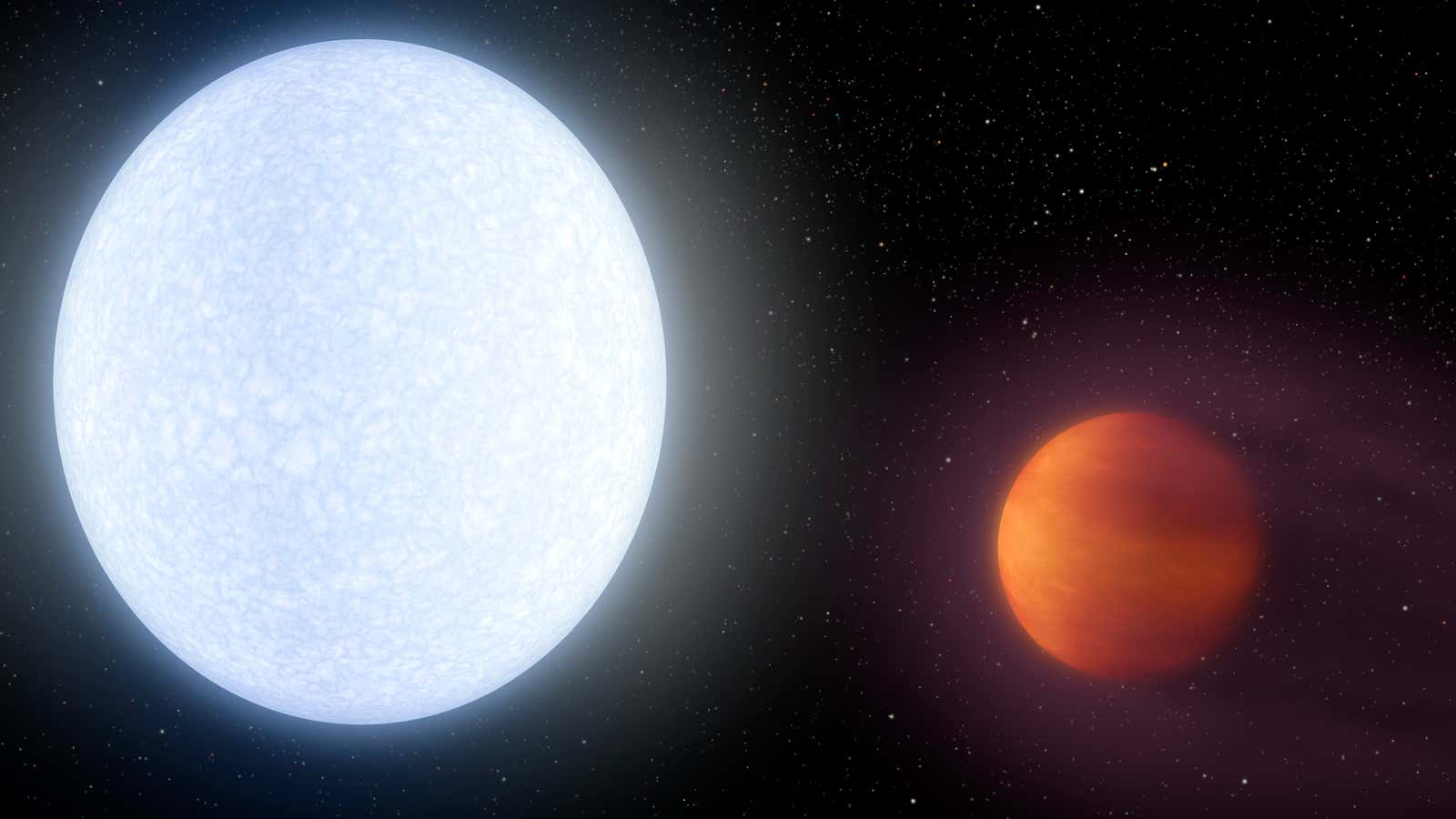Usually, astronomers hunt for exoplanets—planets that exist outside of our own solar system—in search of those that have the conditions to host extraterrestrial life. But sometimes, they just want to see what else is out there.
That was the case when astronomers from Ohio State and Vanderbilt universities discovered the KELT-9 star system 650 light years from Earth. There’s no way it can host life as we know it, but it’s still scientifically interesting as a planetary extreme: Next to the super-hot, super-bright KELT-9 star is a gas giant planet, named KELT-9b, that has the highest temperatures ever recorded on a planet—4,600 Kelvin (7,820°F), which is just 2,000°F cooler than our own sun. Their work was published (paywall) on June 5 in the journal Nature.
Scott Gaudi, lead author of the paper, and his team observed the KELT-9 system with the help of two telescopes used to find planets around bright stars. These telescopes, called the Kilodegree Extremely Little Telescope (KELT) system, found KELT-9 within the Cygnus constellation, which outlines a large swan and can be seen in the northern hemisphere.
According to the researchers’ observations, KELT-9b is one of the more bizarre planets in the galaxy. Unlike the planets in our solar system, which revolve around the sun on a nearly horizontal plane, KELT-9b orbits its star vertically, like an astronomical game of leapfrog. And it moves quickly: year on KELT-9b takes just one-and-a half Earth-days.
It’s also tidally-locked, which means that the same side of the planet is always facing its star. “Day-side would look like a bright orange,” says Gaudi. The night side would probably be more red.
Researchers estimate KELT-9b is a gas giant about three times the size of Jupiter, and so hot even gas molecules can’t exist there. The KELT-9 star is believed to be between 12,600 and 17,500°F, based on estimates from its brightness, and pelts the planet with so much ultraviolet radiation that if there were any traces of water, methane, or carbon dioxide molecules on the planet, they’d break down into their individual atoms. The researchers think it’s more likely the planet is made of hydrogen and helium instead.
But even these atoms can’t take the heat. The radiation from the Kelt-9 star is “hitting them and giving them a kick that they can actually escape the pull of the planet,” says Gaudi. The result is a tail of rogue hydrogen and helium atoms that have made the jump into empty space and now follow the planet’s orbit around the star. KELT-9b is essentially falling apart: “It’s evaporating 10 billion grams per second,” Gaudi says.
Maybe enough gas will evaporate to reveal a hot, lifeless solid core, like Mercury. Or maybe the entire planet will be lost to its star’s radiation. Either way, “KELT-9 will swell to become a red giant star in about a billion years,” Kievan Stassun, one of the paper’s co-authors, said in a statement. When it does, it would swallow whatever was left of its closest planet. “The long-term prospects for life, or real estate for that matter, on KELT-9b are not looking good.”
